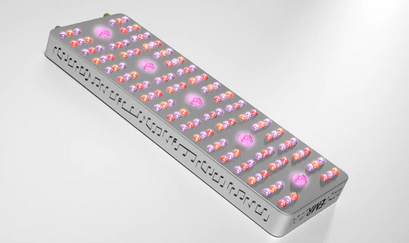What Is Red Light Therapy And Near-Infrared Light Therapy/Photobiomodulation?
Red and near-infrared light are part of the electromagnetic spectrum, and more specifically, part of the spectrum of light emitted by the sun (and also the light of fires). These wavelengths of light are “bioactive” in humans. That means that these types of light literally affect the function of our cells.
 If you pass white light (like sunlight) through a prism, it will separate out the different colors based on their wavelengths. This is how we get rainbows as well, and you might remember this from school with the acronym ROY. G. BIV, which stands for red, orange, yellow, green, blue, indigo, violet.
If you pass white light (like sunlight) through a prism, it will separate out the different colors based on their wavelengths. This is how we get rainbows as well, and you might remember this from school with the acronym ROY. G. BIV, which stands for red, orange, yellow, green, blue, indigo, violet.
A tiny part of this spectrum – from roughly 400nm to 700nm – is visible to the human eye.
At the highest end of the visible light spectrum is red light, which goes from a little over 600nm to approximately 700nm. Above the visible light spectrum is near-infrared, from about 700nm to a little over 1,100nm.
It is the red and near-infrared wavelengths specifically that have these amazing effects on our bodies. (Interestingly, even within that range, not all the red and near-infrared wavelengths seem to be created equal. Specifically, most research showing benefits of red light and near-infrared light have used wavelengths in the narrow ranges of 630-680nm and 800-880nm.)
While most other wavelengths of light (such as UV, blue, green, and yellow light, etc.) are mostly unable to penetrate into the body and stay in the layers of the skin, near-infrared light and red light are able to reach deep into the human body (several centimeters, and close to 2 inches, in some cases) and are able to directly penetrate into the cells, tissues, blood, nerves, the brain, and into the bones.

Once in those deeper tissues, red light and near-infrared (NIR) light have incredible healing effects on the cells where they can increase energy production, modulate inflammation, relieve pain, help cells regenerate faster, and much more.
Two Key Mechanisms of NIR And Red Light Therapy
I generally think of photobiomodulation as having two central mechanisms in how it benefits cellular function and overall health:
- Stimulating ATP production in the mitochondria through interacting with a photoreceptor called cytochrome c oxidase.
- Creating a temporary, low-dose metabolic stress that ultimately builds up the anti-inflammatory, anti-oxidant and cell defense systems of the cell (known as hormesis, which is also a primary mechanism of why exercise works).
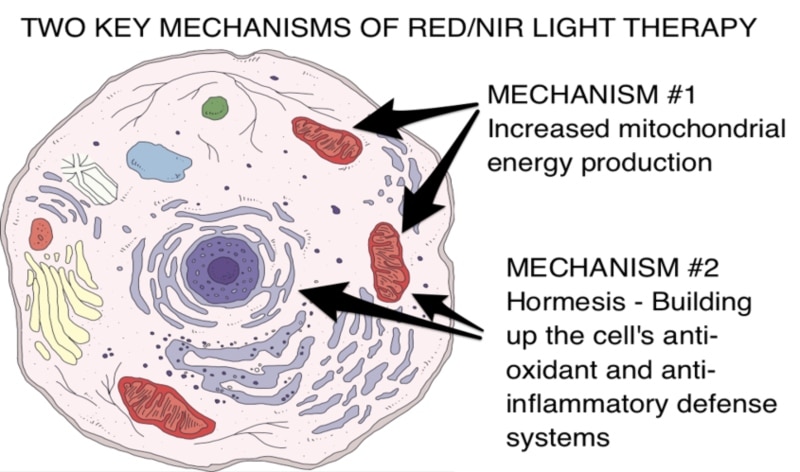
Mechanism #1: Stimulating Mitochondrial Energy Production
Researchers have found that one specific mechanism of near-infrared and red light therapy is that these wavelengths of light are able to penetrate into cells and activate the mitochondria, directly leading to increased cellular energy production. Many lines of research indicate that the mitochondria are the key player when it comes to the mechanism of how red and near-infrared light affect our cells. [26]
This point deserves special attention because a huge amount of research in the last decade points to the mitochondria as being critical to health, disease prevention, energy levels, and longevity. The mitochondria are the batteries that fuel all the processes of our organs; thus, things which enhance the mitochondria translate into more cellular energy inside the cell, which allows the cell or organ (e.g. brain, heart, liver, skin, muscles, etc.) to work optimally.
When it comes to red/NIR, the photo acceptor cytochrome c oxidase in our mitochondria is of particular importance.
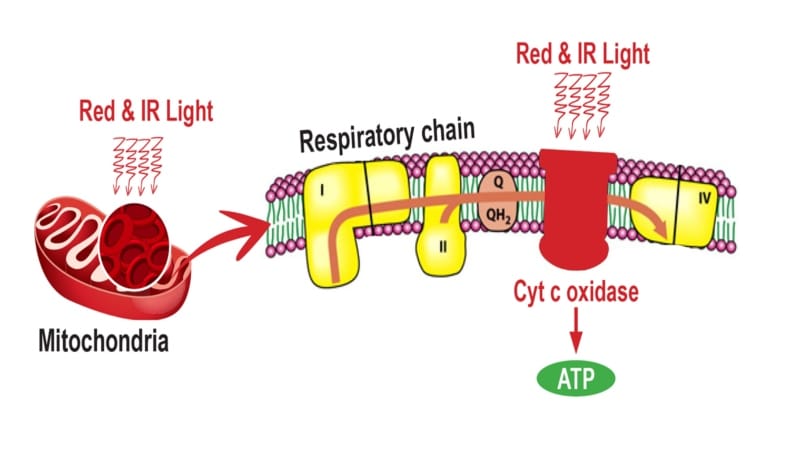
Cytochrome c oxidase is part of the respiratory chain in our mitochondria that is responsible for producing ATP (cellular energy). When red and near-infrared light photons hit the photoacceptor cytochrome c oxidase, it helps the mitochondria use oxygen more efficiently to produce ATP.
While the exact mechanisms are still debated, most researchers believe that nitric oxide (NO) plays a central role.[27],[28]
NO, plays many vital roles in the body, but when we have too much of it, too much in the wrong place, or when our cells don’t have the antioxidant capacity to quell the buildup of NO, it can hinder ATP from being manufactured in the mitochondria. [29]
How?
Well, nitric oxide begins to compete with oxygen in the mitochondria.
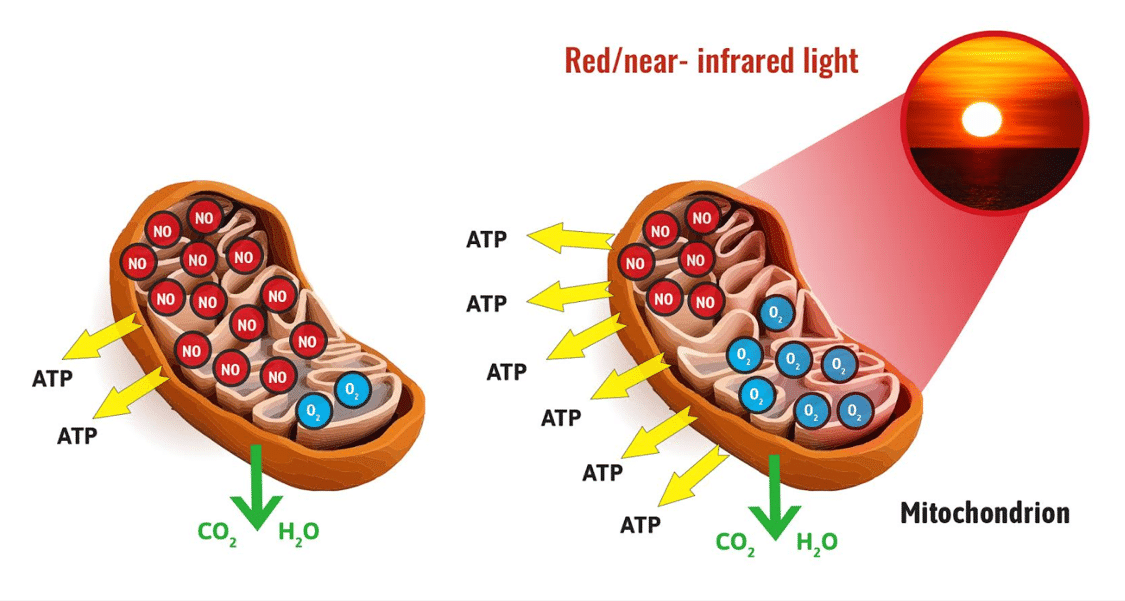
In fact, N.O. binds with cytochrome c — preventing it from binding with oxygen. It basically blocks the oxygen from being used by the mitochondria. Because of this, the NO inhibits efficient ATP production.
Therefore, in unhealthy cells, nitric oxide prevents cytochrome c from getting enough oxygen molecules. This hinders ATP production, which is a recipe for poor mitochondrial function, and thus, poor cellular function.
As shown by several research groups around the world, red and near-infrared light essentially prevents this pairing of NO with cytochrome c oxidase. It knocks the NO out and lets the oxygen in!
In essence, photobiomodulation allows oxygen into the mitochondria (and prevents NO from halting energy production).[30]
This boosts mitochondrial function and helps improve the health of every organ and system in our body.
Mechanism #2: Hormesis Red Light Therapy MN
Another key mechanism for how near-infrared and red light therapy work is through hormesis. Hormesis is the process by which a transient metabolic stressor stimulates adaptations that actually improve health. This may sound like an odd concept at first, but you’re more familiar with it than you realize – exercise is a type of hormesis. Exercise works by transiently creating metabolic stress – stressing out the body (workouts are hard work!) and temporarily increasing reactive oxygen species, a.k.a. free radicals – and then in response to that stress, the body adapts to it with things like improved cardiovascular efficiency, improved blood delivery to the muscles, and by strengthening and growing the mitochondria. It also involves downregulating the genes involved in chronic inflammation and oxidative stress (two keys drivers of aging and disease) and upregulating the genes involved in energy production and the internal cellular antioxidant defense system.
The mitochondria get temporarily stressed in a way that causes them to send signals back to the nucleus of the cell (which contains your DNA), and these signals are literally used by the nucleus to determine what genes should be expressed. This is called “retrograde signaling.” It’s a remarkable phenomenon because most people think that our genes do all the dictating of what happens in our cells. In fact, mitochondria generate signals (based on the environment) that signal back to the nucleus which genes to switch on and off!
In particular, the transient increases in ROS (free radicals) from red/NIR light activates many of the same cell defense systems that exercise does. The transcription factor NF-kB is activated through exposure to free radicals generated by red and near-infrared light, which promotes a very low-level inflammatory response. This then engages a mechanism called the NRF2 pathway and the Antioxidant Response Element (A.R.E.) – our internal cellular antioxidant defense system – which helps put out the fire by eliminating the inflammation and free radicals. In short, in much the same way that exercise builds your muscles stronger by temporarily stressing them, light does the same thing to our internal anti-oxidant and anti-inflammatory defense system. It helps make your cells more tolerant to stress, combats inflammation, helps prevent the buildup of free radicals, and ultimately makes your cells healthier, more energetic, and more resilient.
It turns out that humans actually need some of these low-level stressors in their life. The absence of these stressors actually sabotages our health.
Light serves as transient low-level stress to your cells. The end result of these cellular adaptations to the temporary stress is healthier cells that produce more energy, have a stronger anti-oxidant and anti-inflammatory defense system, and are more resilient to overall stress.
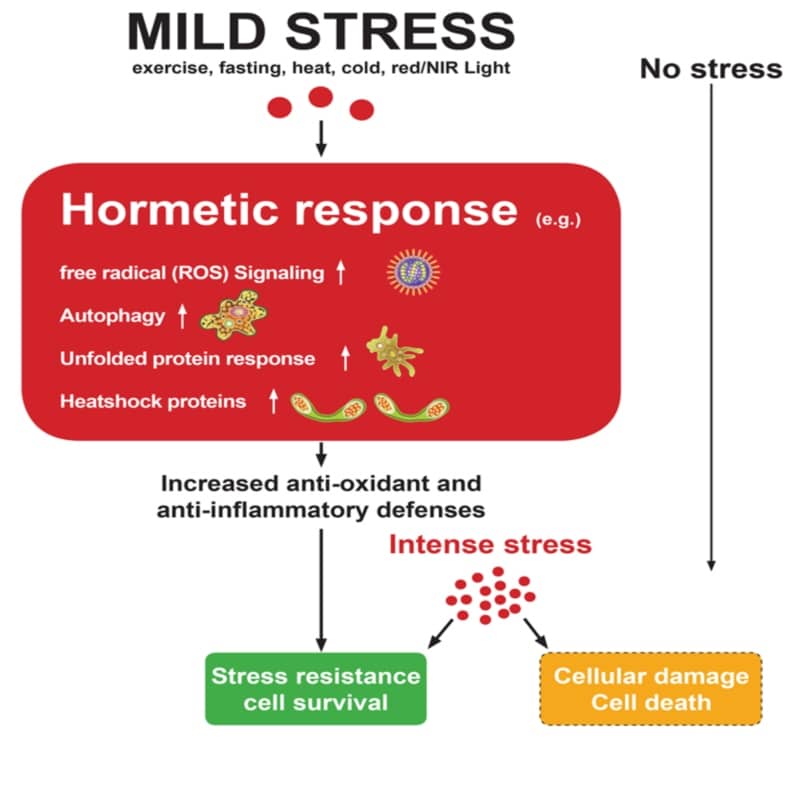
So near-infrared and red light therapy is also a form of hormesis, and benefit the mitochondria by creating a low dose stressor that the body then adapts to by becoming even stronger – the body increases the production of internal antioxidant and anti-inflammatory systems, and builds up the size and strength of mitochondria.
In this way, red/NIR light becomes a powerful tool that doesn’t just temporarily alleviate symptoms (like say, an anti-inflammatory or painkiller drug), but it stimulates your body making lasting adaptations at the cellular level that lead to more resilience against stressors and a greater capacity to produce energy.
Red Light Therapy
Click to Read More!
Disclaimer: These statements have not been evaluated by the Food and Drug Administration. This product is not intended to diagnose, treat, cure or prevent any disease.
Red Light Therapy MNDislcai
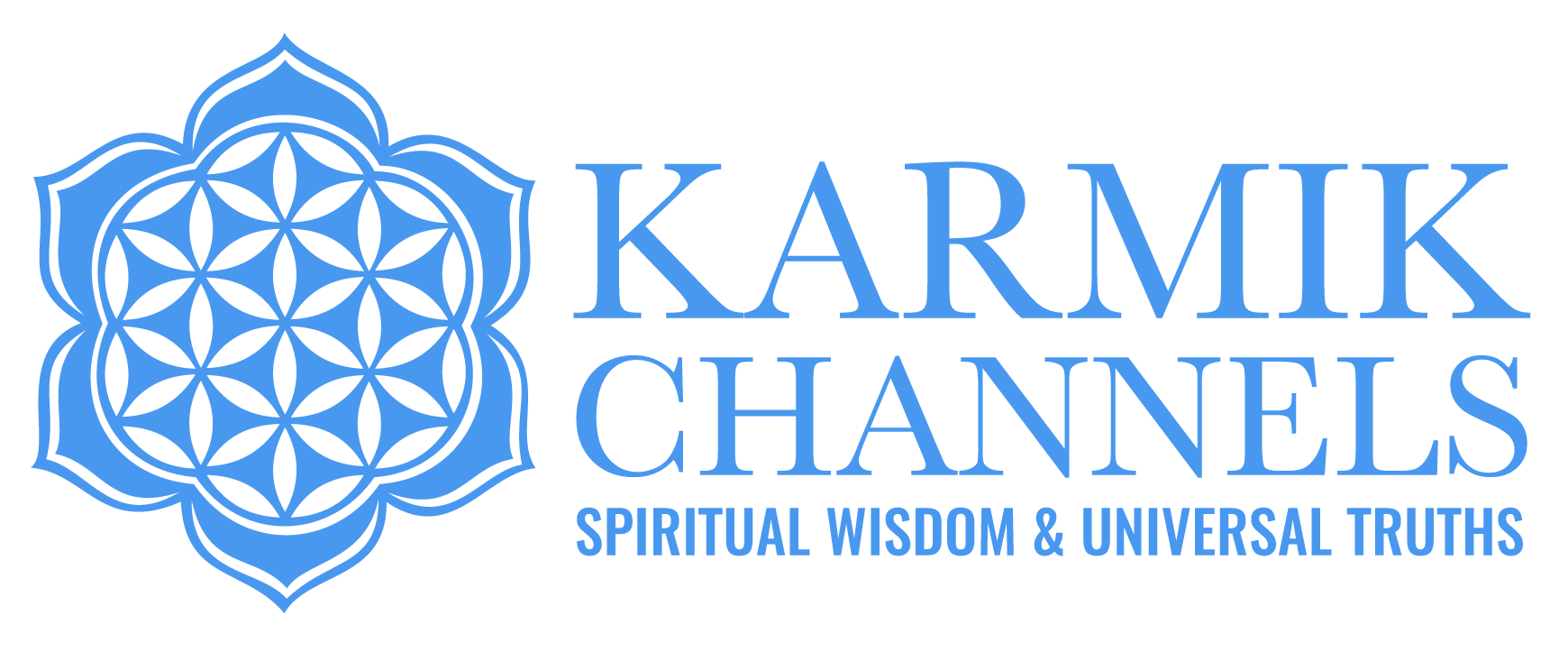

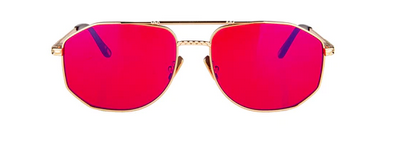

 If you pass white light (like sunlight) through a prism, it will separate out the different colors based on their wavelengths. This is how we get rainbows as well, and you might remember this from school with the acronym ROY. G. BIV, which stands for red, orange, yellow, green, blue, indigo, violet.
If you pass white light (like sunlight) through a prism, it will separate out the different colors based on their wavelengths. This is how we get rainbows as well, and you might remember this from school with the acronym ROY. G. BIV, which stands for red, orange, yellow, green, blue, indigo, violet.




